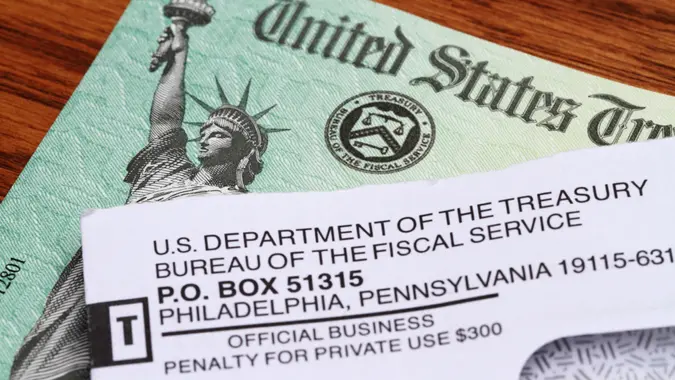When Should Middle Class Retirees Begin To Take Social Security?

Commitment to Our Readers
GOBankingRates' editorial team is committed to bringing you unbiased reviews and information. We use data-driven methodologies to evaluate financial products and services - our reviews and ratings are not influenced by advertisers. You can read more about our editorial guidelines and our products and services review methodology.

20 Years
Helping You Live Richer

Reviewed
by Experts

Trusted by
Millions of Readers
Navigating the path to a comfortable retirement requires careful planning, especially when it comes to deciding when to start taking Social Security benefits. For middle-class retirees, timing the initiation of these benefits is a critical decision that impacts their financial security.
Let’s take a closer look into when middle class folks should start cashing in on their Social Security benefits.
Understanding Social Security
Social Security is designed to replace approximately 40% of pre-retirement income, but retirees need about 70%-80% of their prior earnings to maintain their standard of living. As of November 2023, the average Social Security check was $1,710.78, while a middle-class retiree at 65 could expect approximately $1,867 per month.
When To Start: Early, Full or Delayed Retirement
Retirees can start receiving Social Security benefits at 62, but taking benefits before the full retirement age (FRA) results in a reduced monthly amount. If you retire at 65, your FRA could receive an estimated $1,867, while delaying until 70 could increase your monthly benefit to $2,696.
Factors To Consider
- Healthcare Costs: With Medicare Part B premiums and out-of-pocket expenses, healthcare can be a significant part of a retiree’s budget. Weigh the benefit of a higher Social Security check against potential healthcare costs.
- Longevity: If you expect to live well into your 80s or 90s, delaying Social Security could result in more lifetime benefits.
- Income Needs: Calculate your monthly expenses, including housing, food, and other necessities. Can your savings bridge the gap until a higher monthly benefit kicks in at 70?
- Savings: With 87% of people aged 60 and up having some retirement savings, consider if these can supplement your income until a higher Social Security benefit is available.
- Work Plans: If you plan to continue working in some capacity, you might be able to afford to delay Social Security and increase your monthly benefit.
- Pension and Investments: If you have a pension or investments, consider how these might cover your costs while you wait for a larger Social Security check.
Testing Retirement Budgets
Before deciding when to take Social Security, try living on your projected budget for a period. This “test retirement” can provide a realistic assessment of how far your savings and reduced Social Security benefits will stretch.
Strategic Withdrawals
For early retirement, strategic withdrawals from retirement accounts can be planned. A financial advisor could guide you on when to withdraw from tax-advantaged accounts like 401(k)s and IRAs to optimize your financial situation.
Seeking Advice
Consulting with a financial advisor is prudent to determine the most advantageous age to start taking Social Security benefits. They can help tailor a strategy based on your unique financial situation, health status, and retirement goals.
The Middle Class Decision
For a middle class retiree, the choice of when to take Social Security is multifaceted. It’s not just about the amount on the check but about an intricate balance between present needs and future security. Ultimately, the decision should align with a comprehensive retirement plan that ensures a comfortable and sustainable lifestyle throughout the golden years.
Editor's note: This article was produced via automated technology and then fine-tuned and verified for accuracy by a member of GOBankingRates' editorial team.
 Written by
Written by  Edited by
Edited by 
























